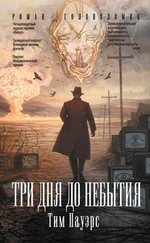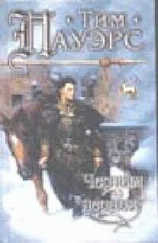But the universe hadn’t been finished with the Calvin Expedition just yet.
There was no written history of the colony’s earliest days, either. None of the official histories other colonies maintained. Not even a single diary.
What there was was only a heroic saga, Dark Fall , attributed to the semi-mythical bard Anderson, the Sanctuarian Homer. Sanctuarian historians believed Dark Fall had probably been composed within a hundred local years after landing, because its earliest known manuscript version was in still recognizable Standard English, and Standard English had been a dead language on Sanctuary for over a thousand T-years. Later written versions had also been found, in at least three of Sanctuary’s indigenous ancient languages, although with significant variations. Clearly it had been passed on in a purely oral tradition during the colonists’ long, desperate struggle to survive after the events it described.
Sanctuary had lost its entire pre-colonization history during that struggle. It had lost even basic literacy and evolved its own mythic interpretations of how humankind had come to exist. When literacy reemerged, it was in entirely different languages, and in the wake of their own belated Scientific Revolution, Sanctuarian scholars had put Dark Fall into the same category as all the other obviously fanciful creation myths.
Until the Standard English manuscript was discovered. It wasn’t complete—at least a dozen stanzas were missing—but the Sanctuarian languages retained enough loan words from Standard English for those scholars to make at least a partial translation of it and realize what it purported to be. Despite its obvious antiquity, the majority of those scholars had continued to consider the entire saga and all the nightmare events it described a pure work of fiction. But not all of them had concurred, and the historian Baranav had become the Sanctuarian Schliemann when he decided to take Anderson at his word, despite the mockery that evoked from the majority of his colleagues.
The mockery which had ended abruptly when his research and excavations located the mythological city of Home on the banks of the Despair River and confirmed the saga’s fundamental accuracy. And confirmed the reason why, according to Anderson, that river had been renamed.
According to Dark Fall , the colonists’ chosen site for the enclave they’d named simply Home had been in a fertile, sheltered mountain valley well-watered by the glacier-fed river they’d named Hope. After the ordeal of finding a habitable planet in the first place, Landing Valley had seemed a paradise. But no one had suspected how tectonically active the mountains around Home were. Not until sometime shortly after the last shuttle had made its final trip into space and returned, when a mountain above Landing Valley had exploded in an eruption that had dwarfed that of Old Terra’s Vesuvius in 2024 PD. It had been followed by a series of seismic shocks which had gone on for days or weeks—or even months. Dark Fall claimed they’d lasted for an entire year, but surely that had to be an exaggeration!
Or possibly not.
Baranav’s excavations had conclusively demonstrated that there’d been multiple eruptions over the centuries since the one Sanctuary’s geologists had labeled the Dark Fall Eruption, but the one which had overwhelmed Home had apparently been both the first and the worst. However long it had lasted, the disaster had been more than sufficient to bury the enclave under forty meters of pyroclastic flow and mud.
Anderson claimed that well over half of Home’s inhabitants had died in that dreadful eruption, and the remainder had been left with only scraps of technology as they faced the task of somehow surviving on their alien homeworld.
Eloise Pritchart had no idea how they’d done it, but they had. Yet if humanity had survived on Sanctuary, it had done so only after a struggle at least as terrible as that of any planet its species had ever settled. Unlike a planet like Grayson, Sanctuary didn’t try to kill them every single day. Indeed, aside from the Dark Fall Eruption, it had hardly tried to kill them at all. But Dark Fall had almost been enough by itself. Though the Sanctuarians might have survived it, they’d lost not only all advanced technology but all true memory of who they were or how they’d come to the world upon which they lived.
By the time the People’s Republic discovered the KCR-126-04 Terminus, Sanctuary had just finished reinventing the telegraph, discovered the germ theory of disease, and begun the transition from waterpower to steam. The planetary population had increased to almost two billion, because aside from its volcanism—which was, admittedly, more pronounced than on all but a handful of other inhabited worlds—Sanctuary’s environment was extraordinarily benign. The planet was a bit on the cool side, but it had very little axial tilt, which gave it extremely mild seasons, and even they were moderated by the fact that eighty-three percent of its surface was water. The original colonists had been selected in no small part to provide as diverse a genetic cross section as possible, which must have given it some cushion against disease, despite how savagely it had been winnowed, and human biochemistry was resistant to almost all of Sanctuary’s native diseases and parasites.
But Sanctuary’s steadily growing population had remained trapped at the bottom of its gravity well, which was particularly ironic, given Refuge’s deep-space industrial potential. Had they retained access to the technology with which they’d arrived, Refuge would inevitably have become one of the most populous, heavily industrialized star systems in the known galaxy. It possessed not one asteroid belt, or even the three belts of a star like Manticore-B. It had five of them, including the Epsilon Belt fifteen light-minutes beyond the system hyper-limit. Once upon a time, the Epsilon Belt had been Refuge’s fourth planet, until the star was captured by the far more massive KCR-126-06-A and lost its outer planets. It had hung on to Refuge IV—or its bits and pieces, at least—but only after the planet was torn apart into an incredibly dense 62,000,000-kilometer wide asteroid belt. Indeed, subsequent comparison of meteoric residue from the Calvin III Crater with the Epsilon Belt suggested that the dinosaur killer which had devastated the colonists’ original destination had been a stray from Epsilon.
And that didn’t even count the six additional asteroid belts of Refuge’s stellar companions, all within fifteen light-hours of Sanctuary.
Anyone but the People’s Republic of Haven would have immediately announced the discovery of the lost Calvin Expedition’s descendents. The Legislaturalists, however, had seen an enormous opportunity. Not only was Refuge incredibly rich in raw materials, but it offered a labor force almost two billion strong. A labor force without a single clue about what lay beyond the bounds of their own planetary atmosphere… or of the staggering wealth their system’s astrography represented.
A labor force which ought to be eager to repay its deliverers for the wonders of the modern technology—the almost magical technology—they brought with them.
It was the sort of situation a bureaucrat in the Solarian League’s Office of Frontier Security could only dream of.
Of course, there’d been a certain amount of startup expense, but once the Sanctuarians had been given the tools, they’d dug in just as enthusiastically as the Manties’ Graysons. And the Legislaturalists—and, later, the Committee of Public Safety—had been able to send thousands upon thousands of teachers, doctors, supervisors, and engineers from places like Cerberus and the other prisons in which they had stowed away so many “dangerous recidivists.”
Читать дальше








![Тим Пауэрс - Последние дни. Том 2 [litres]](/books/393813/tim-pauers-poslednie-dni-tom-2-litres-thumb.webp)
![Тим Пауэрс - Последние дни. Том 1 [litres]](/books/394090/tim-pauers-poslednie-dni-tom-1-litres-thumb.webp)
![Тим Пауэрс - Последний выдох [litres]](/books/402145/tim-pauers-poslednij-vydoh-litres-thumb.webp)